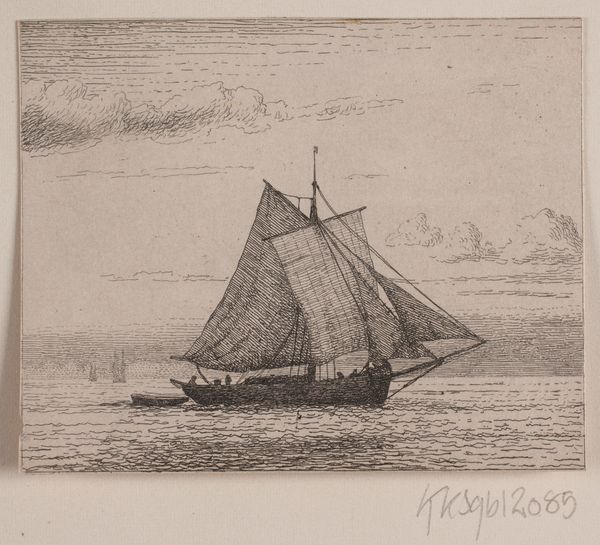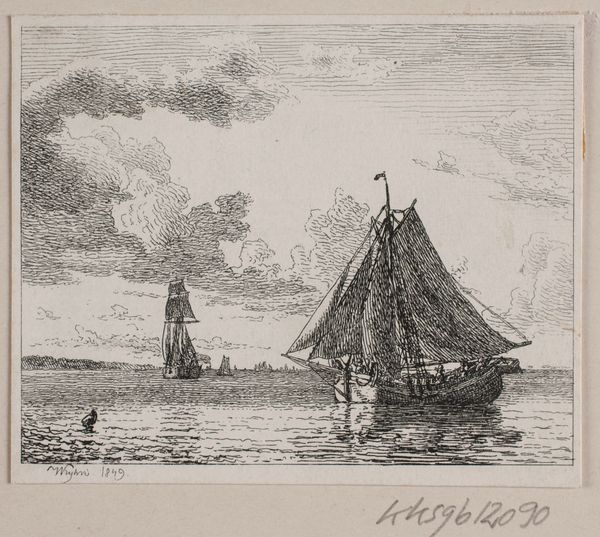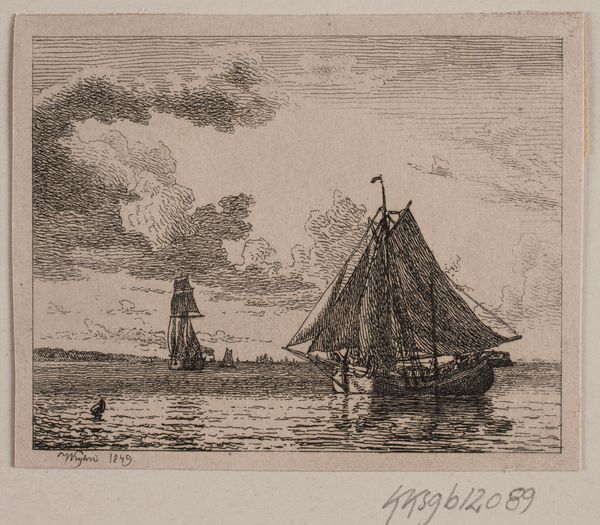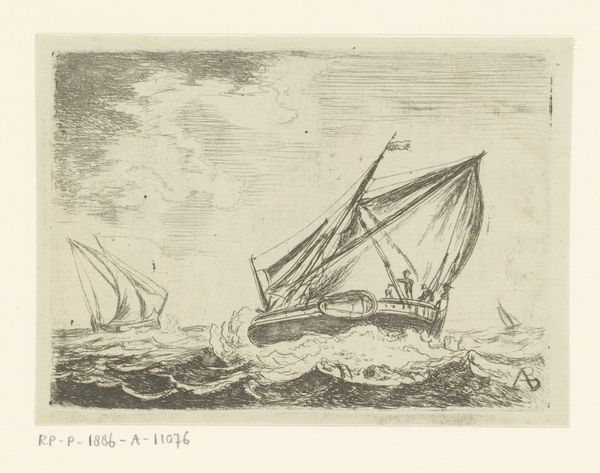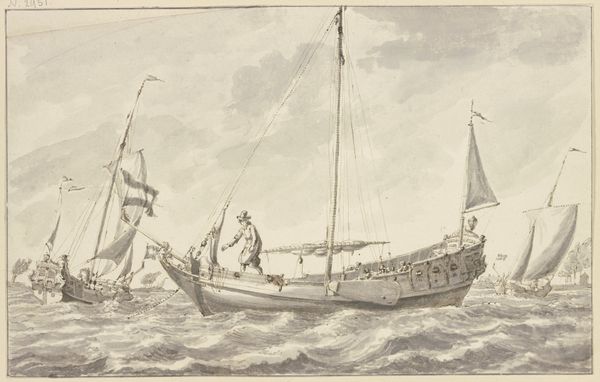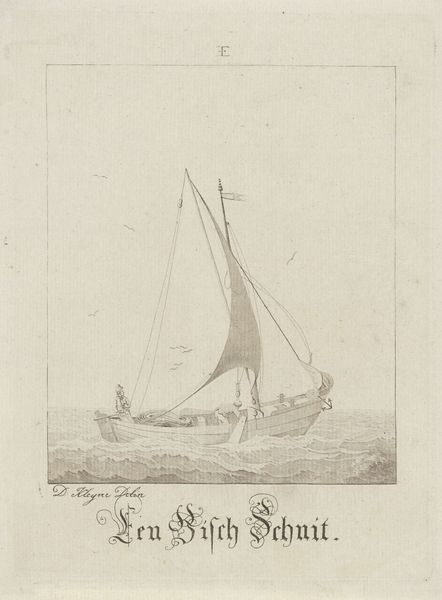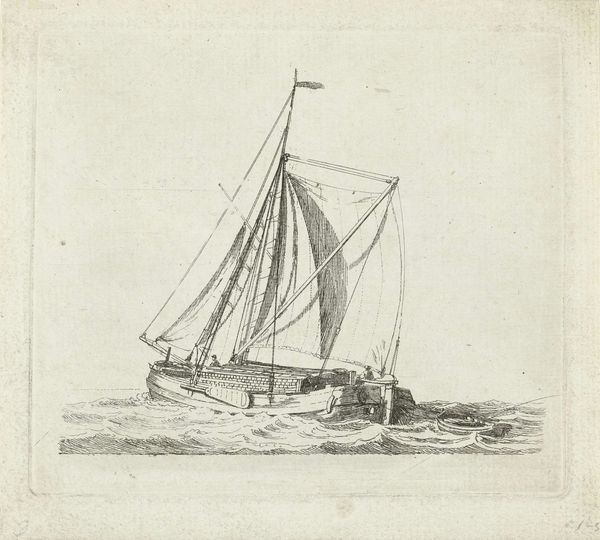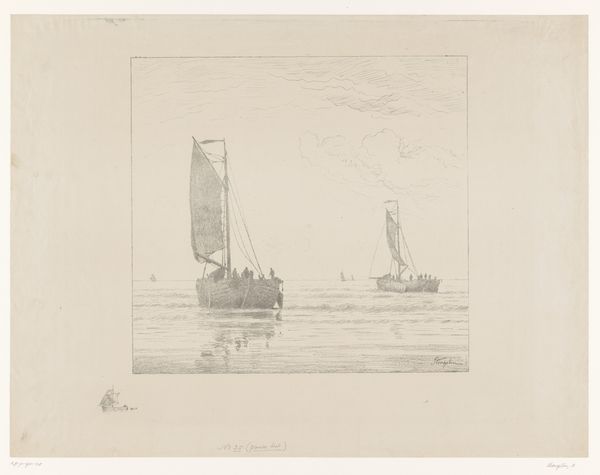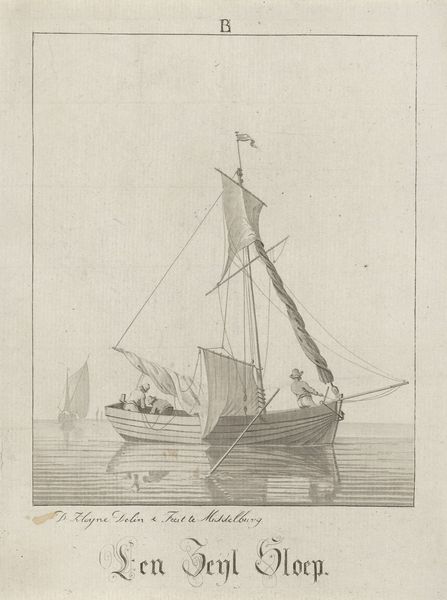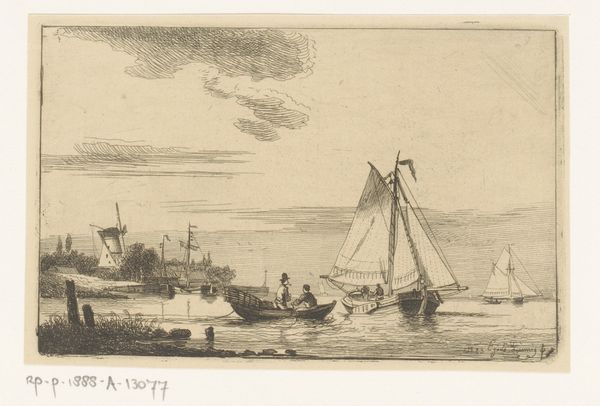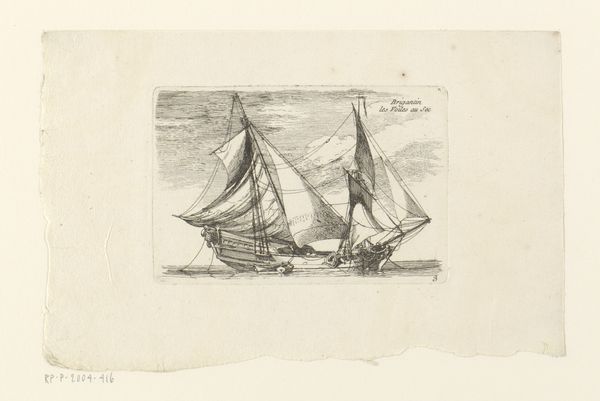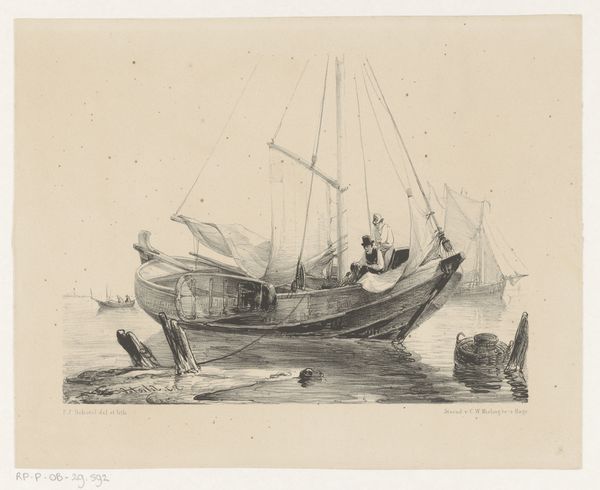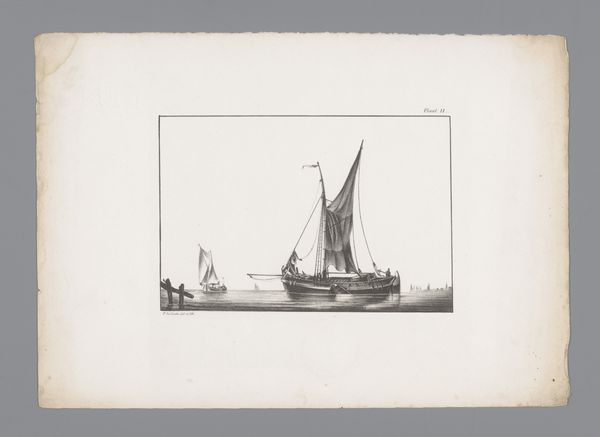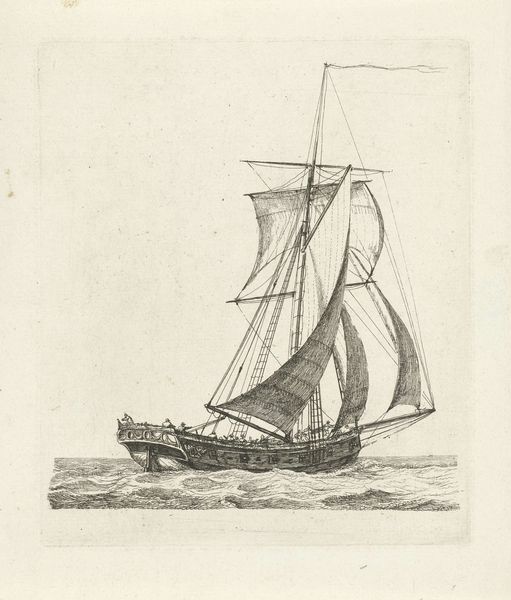
drawing, print, etching, paper
#
drawing
# print
#
etching
#
landscape
#
etching
#
paper
#
romanticism
#
realism
Dimensions: 65 mm (height) x 80 mm (width) (plademaal)
Curator: This etching from 1849 by Vilhelm Kyhn is called "En jagt," or "A Hunt". What do you think? Editor: It has a certain delicate quality. The intricacy of the lines almost mimics the movement of water and wind, doesn't it? The balance of open space and dense hatching gives a great sense of depth to the scene. Curator: Yes, Kyhn masterfully utilizes the etching process here. Think about the cultural context. During this time, etching was becoming a more accessible art form. It democratized landscape imagery, making scenes like this available beyond painted canvases owned by the wealthy. Editor: That's interesting. Looking at it from a material perspective, paper as a readily available medium transformed the way artists connected with wider audiences. "A Hunt" wasn’t necessarily meant for a gallery. It could be disseminated and consumed in different contexts. Were there other etchers taking up similar maritime themes then? Curator: Absolutely. Maritime painting had a firm foothold, often used as a symbol of Denmark's naval power and connection to the world. Printmakers were definitely inspired by the accessibility of those paintings. Here, the etching, however, makes it a more approachable symbol, one perhaps more connected to daily life on the coasts rather than grand state affairs. The small figures on board really enforce that idea. Editor: Those figures add an intriguing element. Their labor seems crucial to understanding the function of the boat—perhaps emphasizing its social significance and highlighting everyday craftsmanship as a means of economic survival, unlike glorifying it. You can nearly feel the material quality of their garments and how those have aged with use. Curator: That connection to the everyday is central. Artists were drawn to capturing life through landscape to make it relatable, while engaging a broader audience through new printing technologies, a crucial step to expand an artist's popularity and career. Editor: So, this simple image is more than a boat on the water; it embodies a moment of technological change, the shifts in cultural identity, and even a reevaluation of labour in artistic representation. Curator: Precisely. It underscores the multifaceted dialogue of progress and identity during that era. It makes me wonder how we continue to capture those themes today. Editor: Yes, a reminder that seemingly simple things can often harbor quite complex stories about art, technology, and people.
Comments
No comments
Be the first to comment and join the conversation on the ultimate creative platform.
